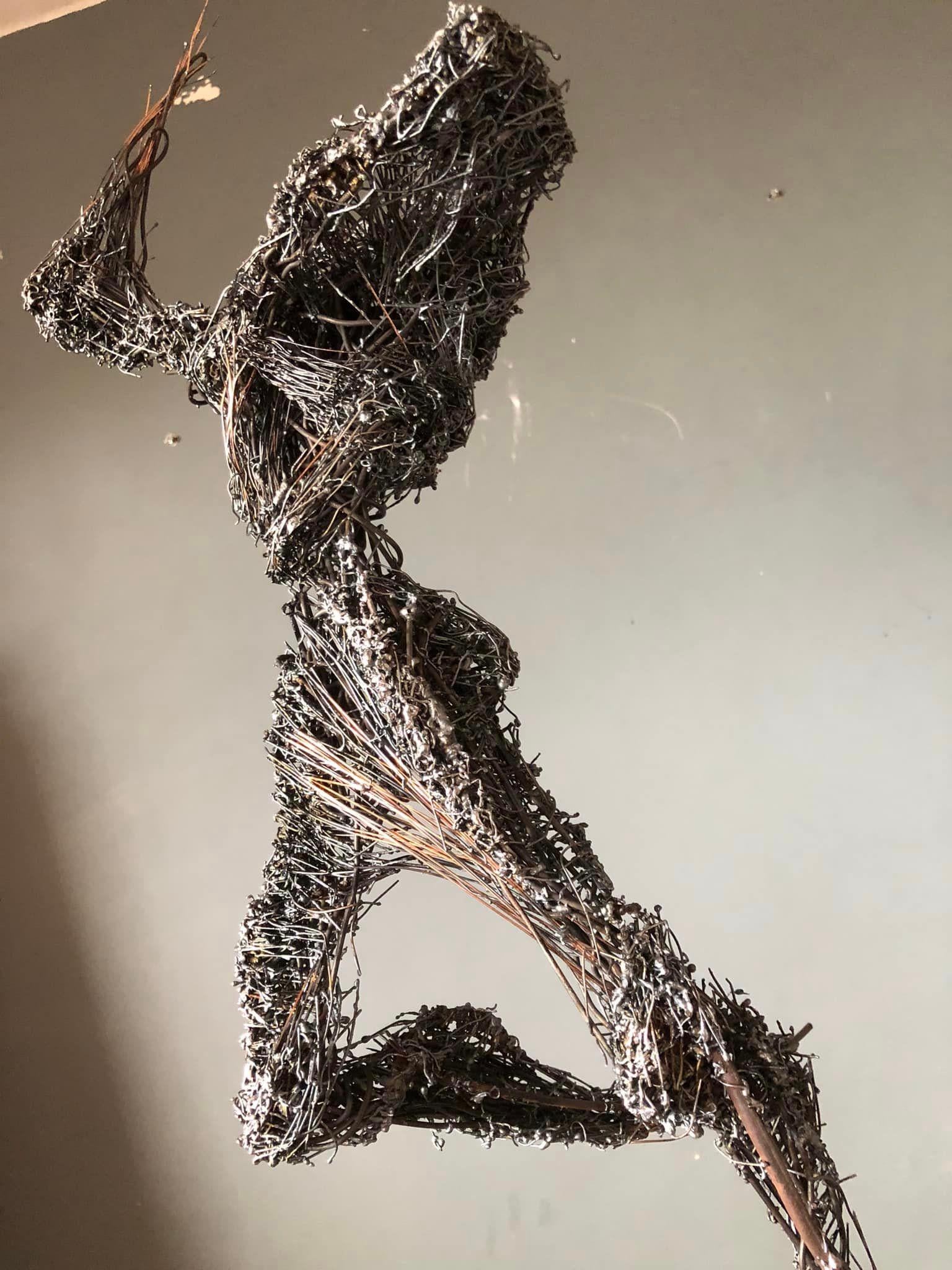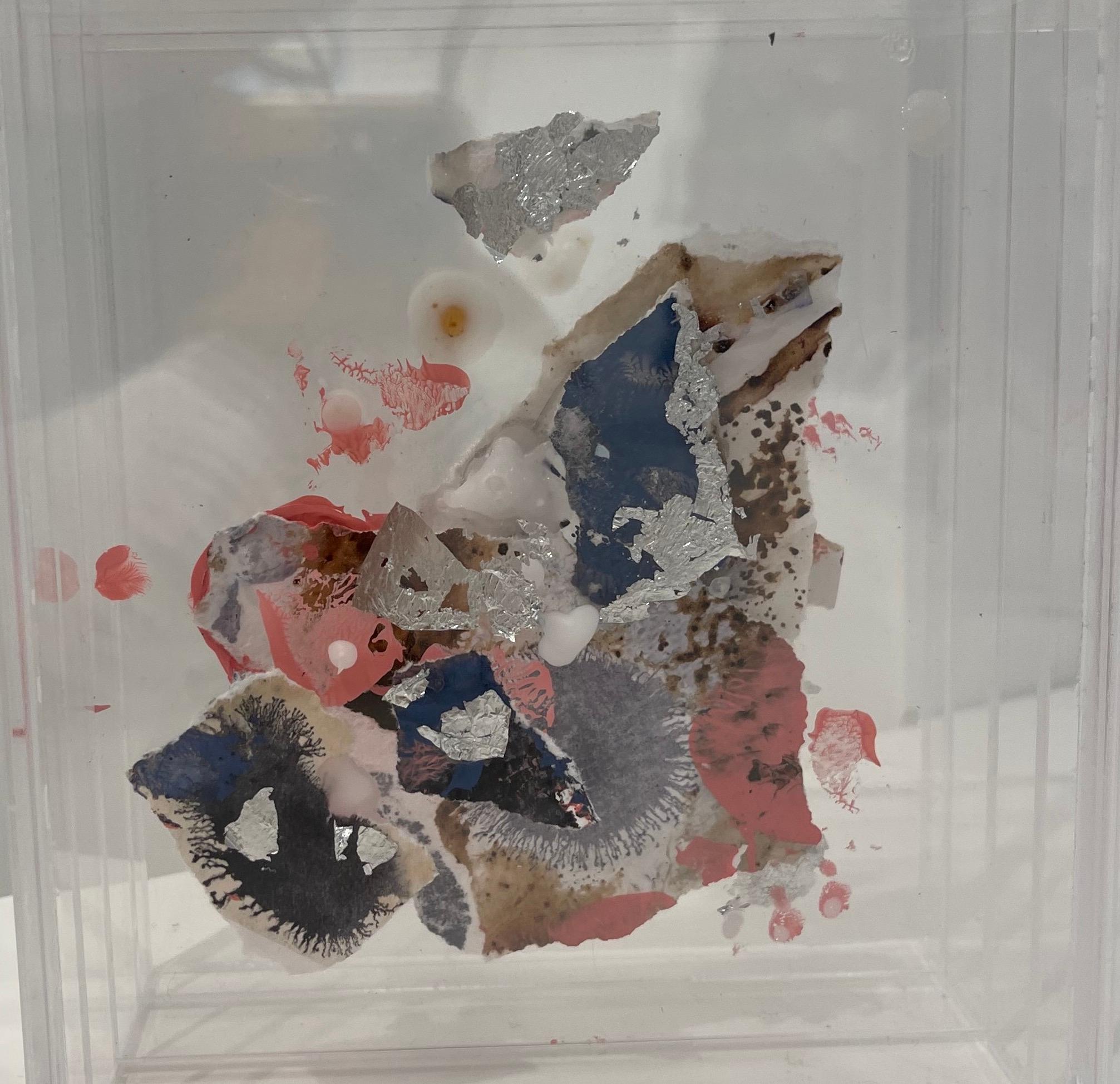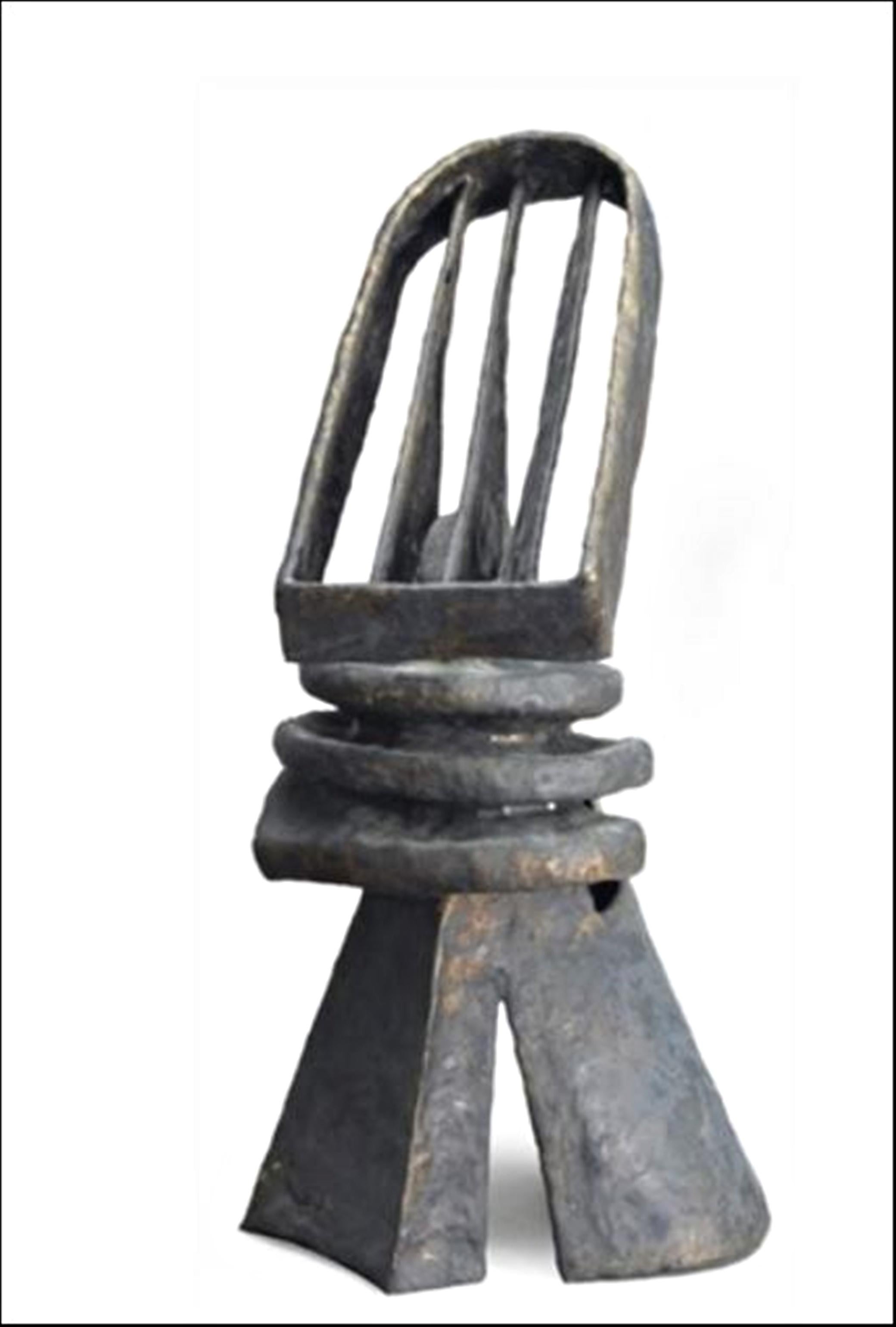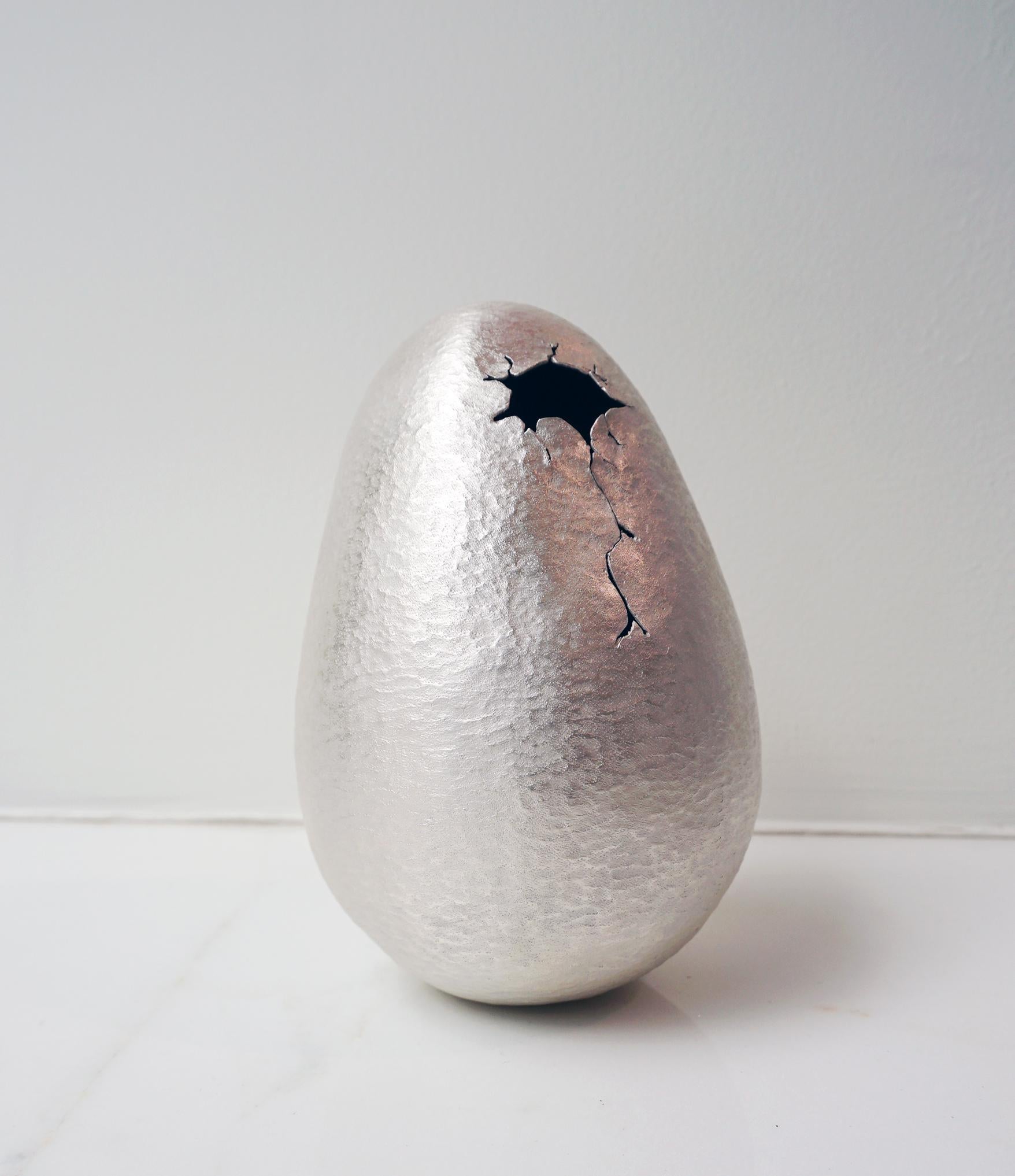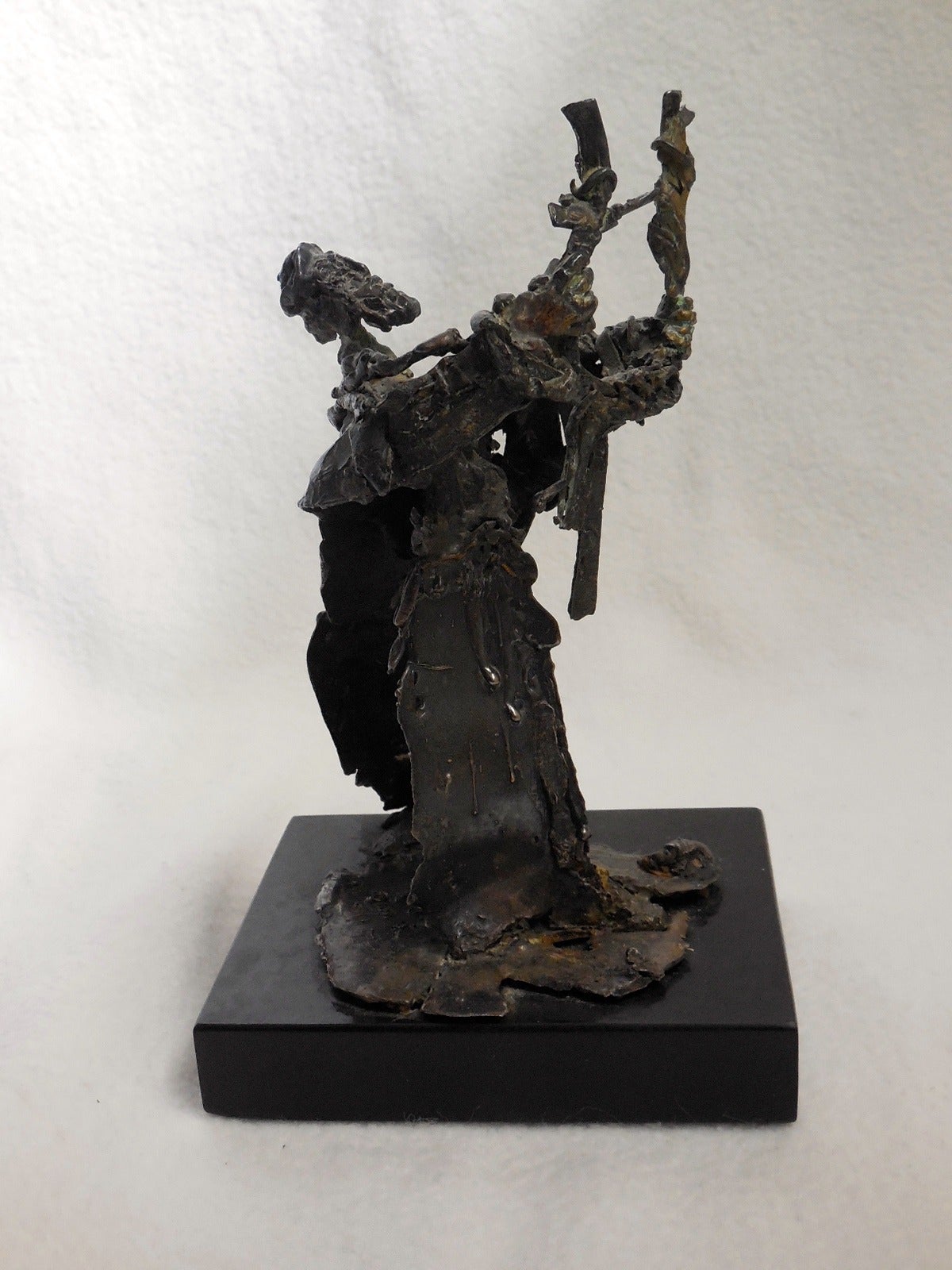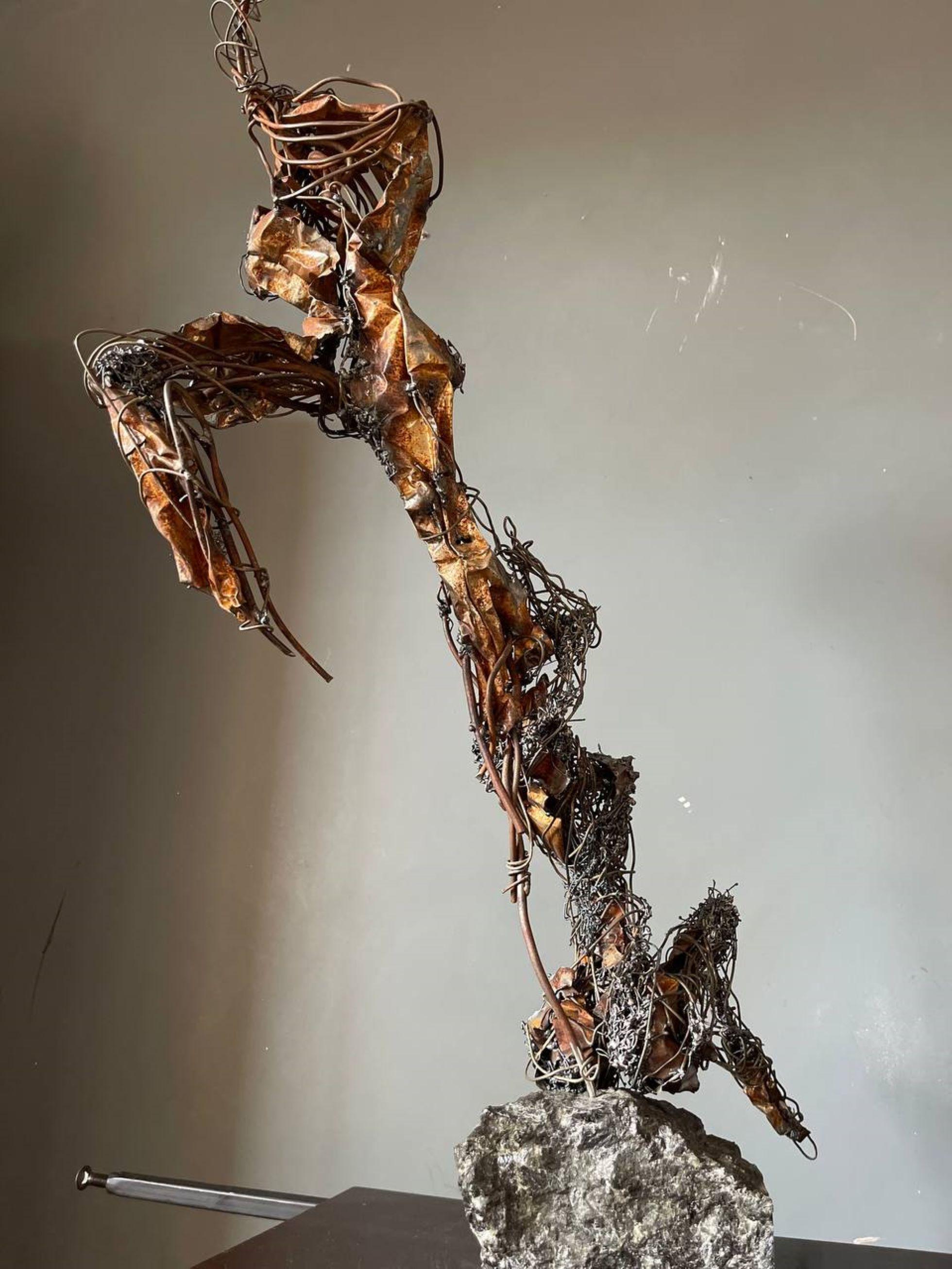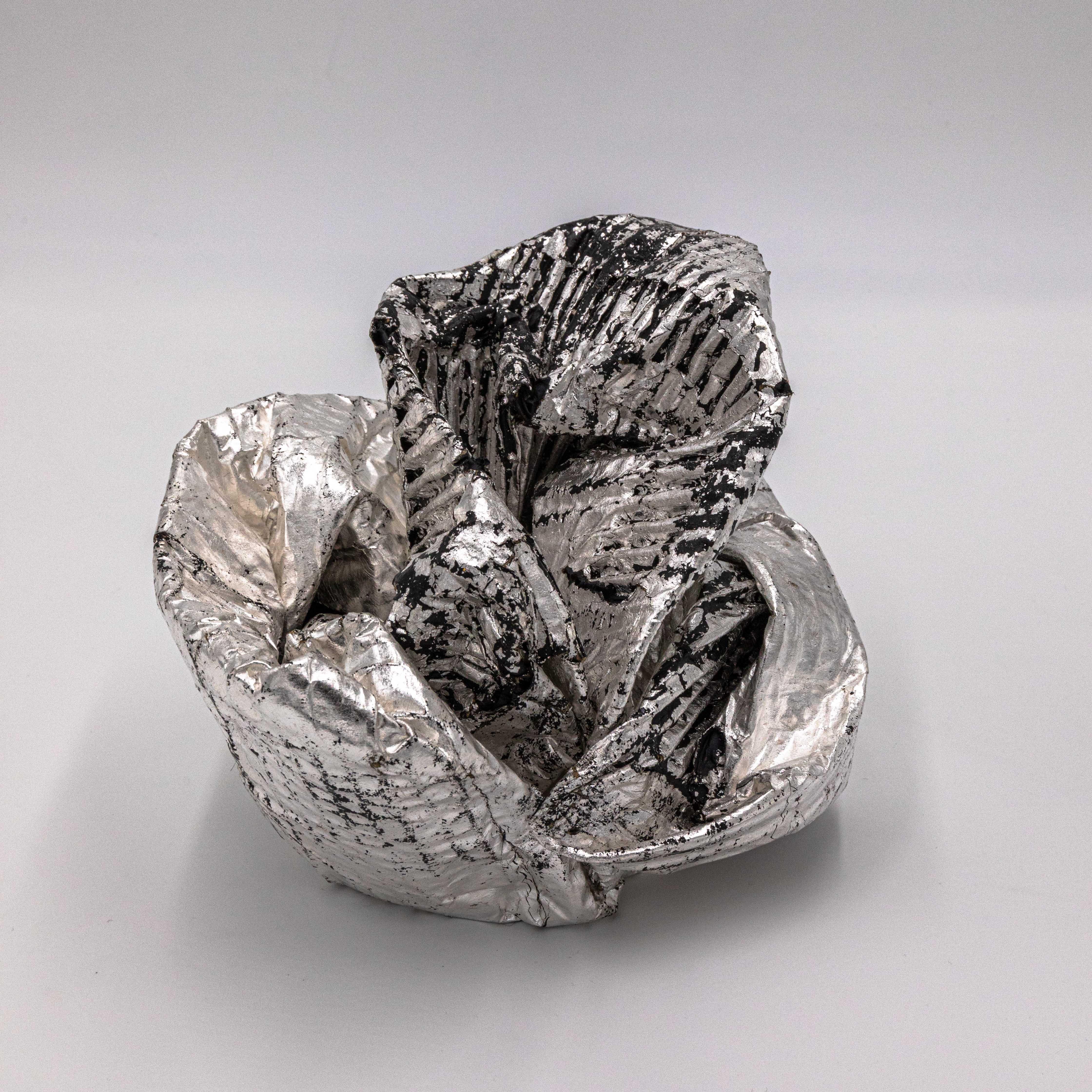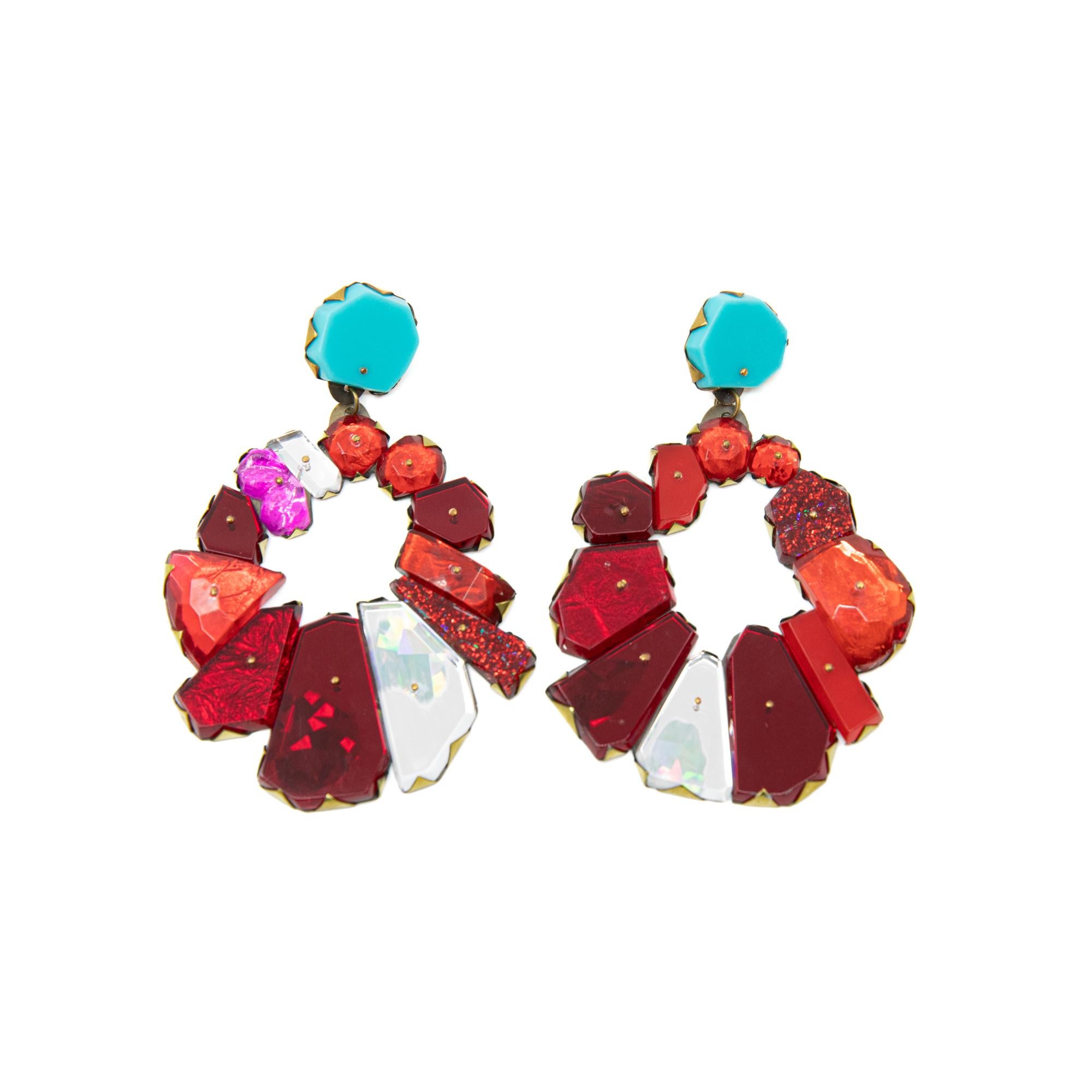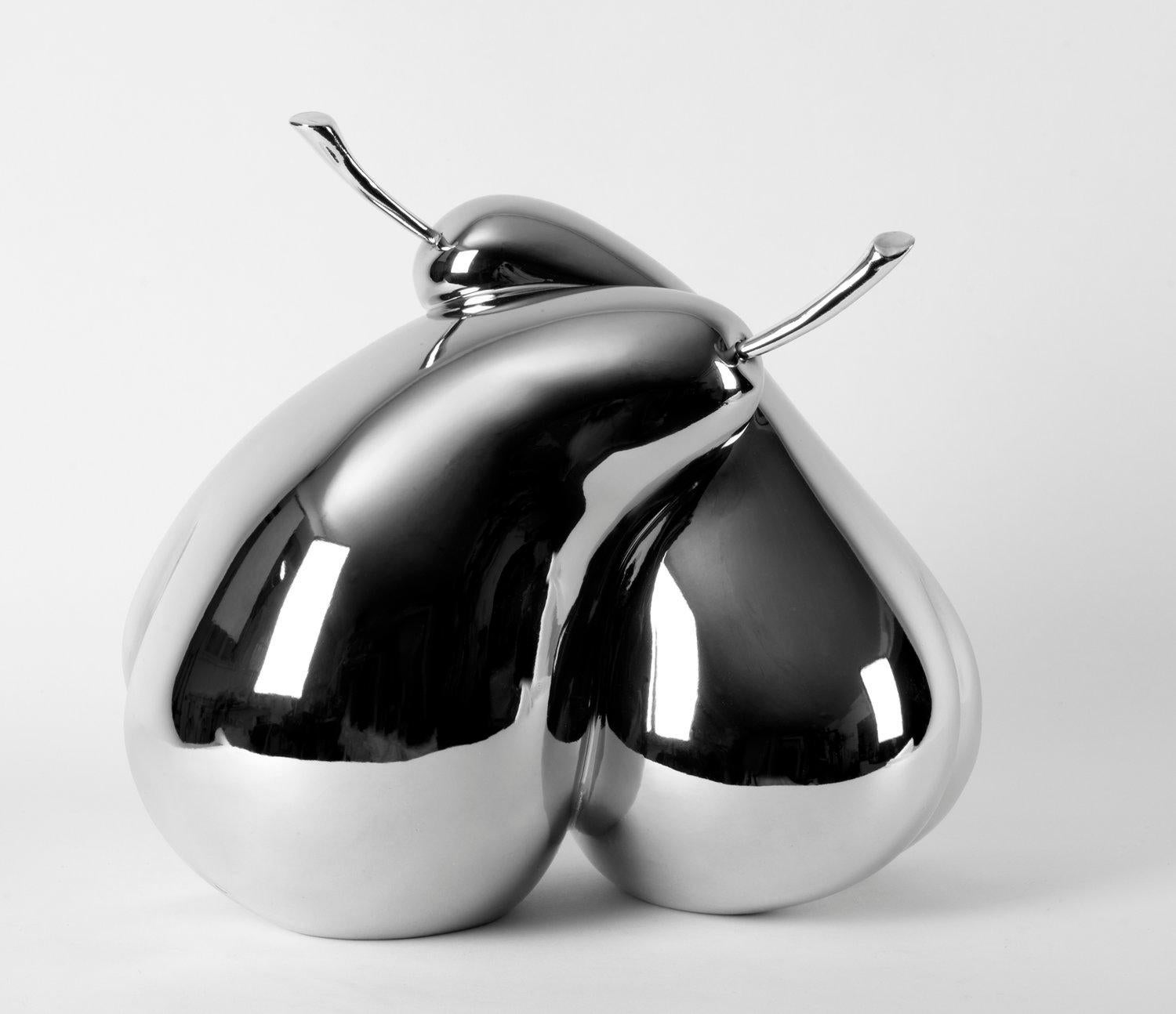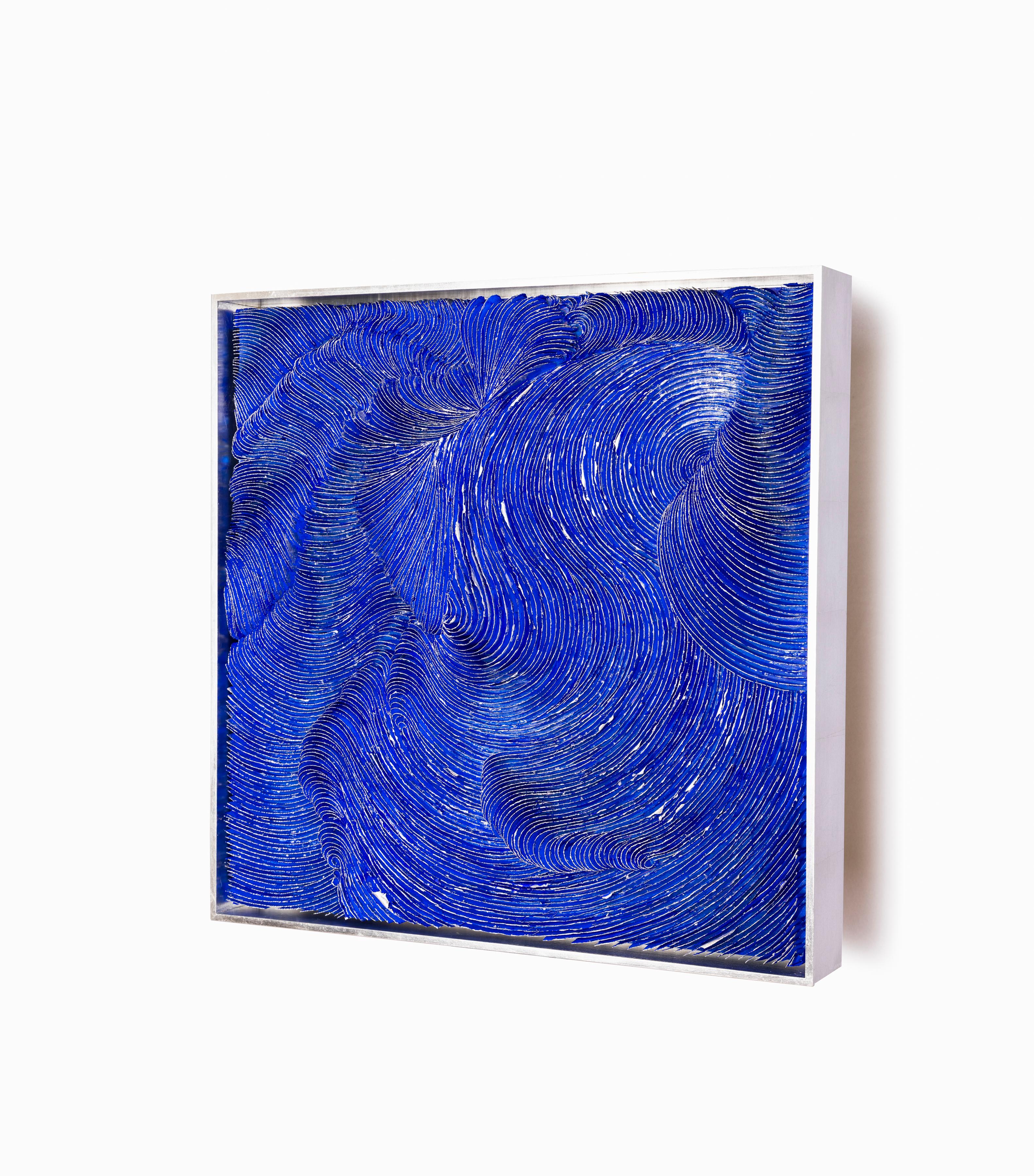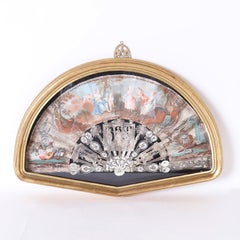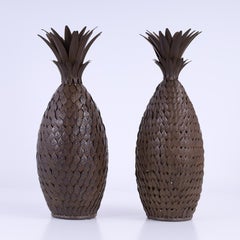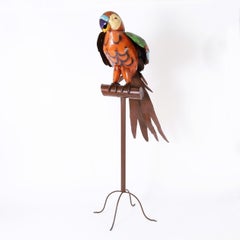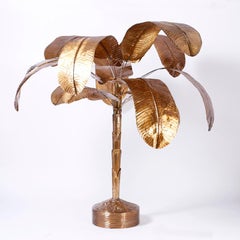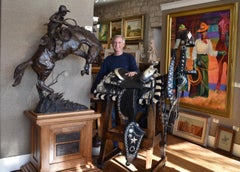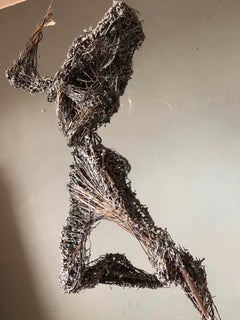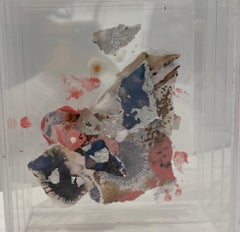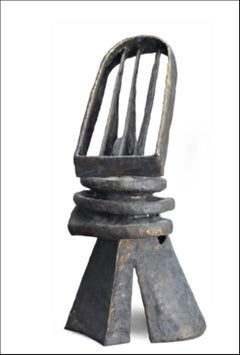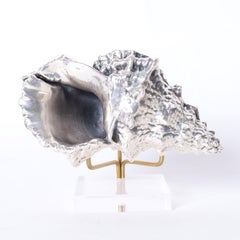
Sterling Silver Shell
View Similar Items
Want more images or videos?
Request additional images or videos from the seller
1 of 8
UnknownSterling Silver Shell1980
1980
About the Item
- Creation Year:1980
- Dimensions:Height: 4.5 in (11.43 cm)Width: 5.5 in (13.97 cm)Depth: 3 in (7.62 cm)
- Medium:
- Period:
- Condition:
- Gallery Location:Palm Beach, FL
- Reference Number:Seller: 64871stDibs: LU1659212017652
About the Seller
5.0
Vetted Professional Seller
Every seller passes strict standards for authenticity and reliability
1stDibs seller since 2021
25 sales on 1stDibs
Typical response time: 1 hour
Authenticity Guarantee
In the unlikely event there’s an issue with an item’s authenticity, contact us within 1 year for a full refund. DetailsMoney-Back Guarantee
If your item is not as described, is damaged in transit, or does not arrive, contact us within 7 days for a full refund. Details24-Hour Cancellation
You have a 24-hour grace period in which to reconsider your purchase, with no questions asked.Vetted Professional Sellers
Our world-class sellers must adhere to strict standards for service and quality, maintaining the integrity of our listings.Price-Match Guarantee
If you find that a seller listed the same item for a lower price elsewhere, we’ll match it.Trusted Global Delivery
Our best-in-class carrier network provides specialized shipping options worldwide, including custom delivery.More From This Seller
View AllAntique Italian Painted Hand Fan in a Glass Case
Located in Palm Beach, FL
Impressive 19th century Italian hand fan, remarkably preserved with silvered metal sticks and guards depicting ancient gods, palm trees and classical emblemes. The paper leaves are h...
Category
Mid-19th Century Rococo More Art
Materials
Silver
Pair of Vintage Metal Pineapple Sculptures
Located in Palm Beach, FL
The pineapple is a symbol of hospitality. Here is a chic pair of mid century pineapples ambitiously handcrafted in metal in a stylized modern form.
Category
Late 20th Century Other Art Style Sculptures
Materials
Metal
Giant Metal Parrot Sculpture
Located in Palm Beach, FL
Outrageous vintage giant parrot sculpture hand crafted in metal, paint decorated and permanently perched on a metal stand with four cabriole legs.
Category
Mid-20th Century Other Art Style Sculptures
Materials
Metal
Brass Palm Tree Sculpture
Located in Palm Beach, FL
Brass banana tree or palm tree sculpture with a custom burnished bronze like finish, removable leaves, a weighted base decorated with floral designs,...
Category
Late 20th Century Modern Sculptures
Materials
Brass
Pair of Bronze Geese Sculptures
Located in Palm Beach, FL
Important pair of Japanese bronze birds in the form of geese masterfully crafted. One with a closed beak the other open, both with quirky expressi...
Category
Late 19th Century Edo Sculptures
Materials
Bronze
Pair of Cloisonné Tang Style Horse Sculptures
Located in Palm Beach, FL
Vintage pair of Chinese cloisonné horses with a Tang dynasty form decorated with colorful symbolic references on an alluring blue back...
Category
Mid-20th Century Sculptures
Materials
Metal
You May Also Like
EDWARD BOHLIN 1940s 1950s SILVER MOUNTED PARADE SADDLE HOLLYWOOD WESTERN ARTIST
By Edward H. Bohlin
Located in San Antonio, TX
Edward Bohlin silver mounted parade saddle. Black Leather. Great Bohlin Stamp. Cowboy Saddle, Western Saddle. 1940s 50s one of his most desirable periods. Bohlin of Hollywood California. He made all of the saddles and other related western gear for the movies but mostly to ride in the "Tournament of Roses Parade" Rosebowl in California. The Corona was custom made using the original Corona as the sample to copy. Here is a little provenance on this saddle:
This is a rare saddle. We think there were only five made. They were marketed to Texas Buyers when in reality there wasn't a big market in Texas. The majority of these works of art were mostly purchased by California buyers.
This saddle was formerly owned by L.D. Brinkman. After his death it was acquired by a friend of mine. I purchased it from him Jan. 1, 2024, and sold it to one of my good friends and customer Jan. 3, 2024. Sadly, he recently passed away and the saddle is on the market again.
This Saddle is depicted in the Bohlin Catalog "The Lone Star Saddle"
Lloyd Donald Brinkman (1929 – July 4, 2015) was an American businessman, cattle breeder, civic leader and art collector. He was the owner of "the largest floor covering distributor in the US," and 350 pizza parlors with Gatti's Pizza. He bred Brangus cattle, and he was a significant collector of Western art.
Brinkman was born in 1929 in near Dagmar in Sheridan County, Montana. His grandparents were Danish immigrants who became homesteaders in the county.
Brinkman graduated from Pascagoula High School in Pascagoula, Mississippi. He attended Pearl River Community College, and he graduated from the University of Southern Mississippi, where he earned a bachelor's degree in marketing in 1952.
Brinkman initially worked in the flooring industry, even starting his own business in Dallas, Texas in 1960. It eventually became "the largest floor covering distributor in the US." Brinkman was also the owner of Gatti's Pizza, which operated 350 restaurants by the time he sold the business for $24 million in 2004.
Brinkman was also a breeder of Brangus cattle.
Brinkman was a co-founder of the Museum of Western Art in Kerrville. He served on the board of directors of the National Cowboy & Western Heritage Museum. He also served as the chairman of the public utility board of Kerrville, Texas. He was honored as the "Citizen of the Year" by the Kerrville Area Chamber of Commerce in 1984.
Brinkman was a collector of Western art. He owned paintings by American artists like Joe Beeler, E. Irving Couse, Frank Tenney Johnson, Gerald Harvey Jones, Robert Lougheed, Howard Terpning, and Olaf Wieghorst.
Brinkman was married seven times. He had a son, L.D. "Don" Brinkman Jr., and a daughter, Pamela Brinkman Stone.
Brinkman died on July 4, 2015.
Biography of Edward Bohlin
Edward Bohlin (1895-1980)
Edward H Bohlin Company (Established 1920)
Saddlery-Saddle Maker
1895-1980
Born in Sweden
Hollywood, CA.
Born in Sweden in 1895, Edward Bohlin ran away from home at age 15, working his way to America on a huge four-mast schooner with dreams of Buffalo Bill Cody's Wild West in his head. Ed worked cattle drives around Montana before opening his first saddle shop in Cody, Wyoming where he did rope tricks in front of his shop to draw business. He met Tom Mix while performing at the Pantages Theatre in Hollywood and Mix convinced Ed to stay and produce silver and leather items in the Los Angeles area. From his humble beginnings to his fame in Hollywood for high-end pieces, Ed crafted more than 12,000 Bohlin saddles...
Category
1940s Realist More Art
Materials
Silver
"Inspiration"
Located in Edinburgh, GB
Masculine inspiration can take many forms and looks different depending on the individual, his personality, energy, and emotional state. But generally speaking, masculine inspiration...
Category
21st Century and Contemporary Abstract Abstract Sculptures
Materials
Metal, Iron, Silver, Copper
(In) Visible Cycles II
Located in PARIS, FR
One of a kind scented art piece, unique.
This acrylic box is a dimensional work featuring three interchangeable, scented panels.
Vibrant colors, an original and unique creation, a ...
Category
2010s Contemporary Abstract Sculptures
Materials
Silver
Maquette for Laureate (unique sculpture)
By Seymour Lipton
Located in New York, NY
Seymour Lipton
Maquette for Laureate, ca. 1968-1969
Nickel silver on monel metal
Unique
18 × 8 1/2 × 7 inches
Marlborough-Gerson Gallery, New York
Acquired from the above by the previous owner, 1969
thence by descent
Christie's New York: Monday, June 30, 2008 [Lot 00199]
Acquired from the above Christie's sale This unique sculpture by important Abstract Expressionist sculptor Seymour Lipton is a maquette of the monumental sculpture "Laureate" - one of Lipton's most iconic and influential works located on the Riverwalk in downtown Milwaukee, Wisconsin. Laureate is a masterpiece that was commissioned by the Allen-Bradley Company in memory of Harry Lynde Bradley and as an enhancement for the newly constructed Performing Arts Center. It is located on the east bank of the Milwaukee River at 929 North Water Street. The Bradley family in Milwaukee were renowned patrons of modernist sculpture, known for their excellent taste who also founded an eponymous sculpture park. For reference only is an image of the monumental "Laureate" one of Milwaukee's most beloved public sculptures. According to the Smithsonian, which owns a different unique variation of this work, "The full-size sculpture Laureate was commissioned by the Marcus Center for the Performing Arts in Milwaukee. In the initial drawings, Seymour Lipton combined details from the architectural plan with a wide variety of images, ranging from musical instruments to a lighthouse on the island of Tobago. He transformed the basic shapes from these sketches into a welded sculpture, which evokes a figure composed of columns, harp strings, and coiled rope. Lipton created this piece to celebrate achievement in the arts. The dramatic silhouette commands your attention, reflecting the title Laureate, which means worthy of honor and distinction. The final version of the piece is over twelve feet high and stands out against the pale, flat buildings of the arts center.,,"
Provenance
Marlborough-Gerson Gallery, New York
Acquired from the above by the previous owner, 1969
thence by descent
Christie's New York: Monday, June 30, 2008 [Lot 00199]
Acquired from the above Christie's sale
About Seymour Lipton:
Born in New York City in 1903, Seymour Lipton (1903-1986) grew up in a Bronx tenement at a time when much of the borough was still farmland. These rural surroundings enabled Lipton to explore the botanical and animal forms that would later become sources for his work. Lipton’s interest in the dialogue between artistic creation and natural phenomena was nurtured by a supportive family and cultivated through numerous visits to New York’s Museum of Natural History as well as its many botanical gardens and its zoos. In the early 1920s, with the encouragement of his family, Lipton studied electrical engineering at Brooklyn Polytechnic Institute and pursued a liberal arts education at City College. Ultimately, like fellow sculptor Herbert Ferber, Lipton became a dentist, receiving his degree from Columbia University in 1927. In the late 1920s, he began to explore sculpture, creating clay portraits of family members and friends.
In addition to providing him with financial security, dentistry gave Lipton a foundation in working with metal, a material he would later use in his artwork. In the early 1930s, though, Lipton’s primary sculptural medium was wood. Lipton led a comfortable life, but he was also aware of the economic and psychological devastation the Depression had caused New York. In response, he generally worked using direct carving techniques—a form of sculpting where the artist “finds” the sculpture within the wood in the process of carving it and without the use of models and maquettes. The immediacy of this practice enabled Lipton to create a rich, emotional and visual language with which to articulate the desperation of the downtrodden and the unwavering strength of the disenfranchised. In 1935, he exhibited one such early sculpture at the John Reed Club Gallery in New York, and three years later, ACA Gallery mounted Lipton’s first solo show, which featured these social-realist-inspired wooden works. In 1940, this largely self-taught artist began teaching sculpture at the New School for Social Research, a position he held until 1965.
In the 1940s, Lipton began to devote an increasing amount of time to his art, deviating from wood and working with brass, lead, and bronze. Choosing these metals for their visual simplicity, which he believed exemplified the universal heroism of the “everyman,” Lipton could also now explore various forms of abstraction. Lipton’s turn towards increasing abstraction in the 1940s allowed him to fully develop his metaphorical style, which in turn gave him a stronger lexicon for representing the horrors of World War II and questioning the ambiguities of human experience. He began his metal work with cast bronze sculptures, but, in 1946, he started welding sheet metal and lead. Lipton preferred welding because, as direct carving did with wood, this approach allowed “a more direct contact with the metal.”[ii] From this, Lipton developed the technique he would use for the remainder of his career: “He cut sheet metal, manipulated it to the desired shapes, then joined, soldered, or welded the pieces together. Next, he brazed a metal coating to the outside to produce a uniform texture.”[iii]
In 1950, Lipton arrived at his mature style of brazing on Monel metal. He also began to draw extensively, exploring the automatism that abstract expressionist painters were boasting at the time. Like contemporaries such as Jackson Pollock, Lipton was strongly influenced by Carl Jung’s work on the unconscious mind and the regenerative forces of nature. He translated these two-dimensional drawings into three-dimensional maquettes that enabled him to revise his ideas before creating the final sculpture.The forms that Lipton produced during this period were often zoomorphic, exemplifying the tension between the souls of nature and the automatism of the machine.
In the years following the 1950s, Lipton’s optimism began to rise, and the size of his work grew in proportion. The oxyacetylene torch—invented during the Second World War—allowed him to rework the surfaces of metal sculptures, thus eliminating some of the risks involved with producing large-scale finished works. In 1958, Lipton was awarded a solo exhibition at the Venice Biennale and was thus internationally recognized as part of a small group of highly regarded avant-garde constructivist sculptors. In 1960, he received a prestigious Guggenheim Award, which was followed by several prominent public commissions, including his heroic Archangel, currently residing in Lincoln Center’s David Geffen Hall.
A number of important solo exhibitions of his work followed at The Phillips Collection in Washington, DC (1964); the Milwaukee Art Center and University of Wisconsin, Milwaukee (1969); the Virginia Museum of Fine Arts in Richmond (1972); the Everson Museum in Syracuse, NY (1973); the Herbert E. Johnson Museum of Art of Cornell University in Ithaca, NY (1973); the National Collection of Fine Arts, Smithsonian Institution (now the Smithsonian American Art Museum) in Washington, DC (1978); and a retrospective in 1979 at The Jewish Museum in New York. In 1982 and 1984 alone, two exhibitions of his sculpture, organized respectively by the Mint Museum (Charlotte, NC) and the Hillwood Art Gallery of Long Island University (Greenvale, NY), traveled extensively across museums and university galleries around the nation. In 2000, the traveling exhibition An American Sculptor: Seymour Lipton was first presented by the Palmer Museum of Art of Pennsylvania State University in University Park. Most recently, in 2009, the Ackland Art Museum in Chapel Hill, NC mounted The Guardian and the Avant-Garde: Seymour Lipton’s Sentinel II in Context.
Since 2004, Michael Rosenfeld Gallery has been the exclusive representative of the Estate of Seymour Lipton and has presented two solo exhibitions of his work—Seymour Lipton: Abstract Expressionist Sculptor (2005) and Seymour Lipton: Metal (2008). In 2013, Michael Rosenfeld Gallery presented Abstract Expressionism, In Context: Seymour Lipton, which included twelve major sculptures by the artist, along with works by Charles Alston, Norman Bluhm, Beauford Delaney, Willem de Kooning, Jay DeFeo, Michael Goldberg, Adolph Gottlieb, Hans Hofmann, Lee Krasner, Norman Lewis, Conrad Marca-Relli, Boris Margo, Alfonso Ossorio, Richard Pousette-Dart, Milton Resnick, Charles Seliger...
Category
1960s Abstract Expressionist Abstract Sculptures
Materials
Metal, Silver
Cosmogony #38
By Adriana Marmorek
Located in New York, NY
ADRIANA MARMOREK
COSMOGONY #38, 2020
silver, 90
5 1/8 x 3 3/4 x 3 3/4 in. 13 x 9.5 x 9.5 cm.
egg
Category
2010s Contemporary Still-life Sculptures
Materials
Silver
KIng David with Harp
By Hana Geber
Located in Surfside, FL
American sculptor Hana Geber (1910 - 1990)
She was born in Prague of Czechoslovakian heritage and eventually settled in New York. Her sculptures deal with Jewish themes...
Category
20th Century Modern Figurative Sculptures
Materials
Marble, Silver

